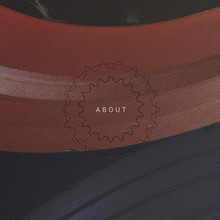Thermally sprayed coatings is a process where the material is heated and small particles are projected onto the prepared surface, where they adhere and form a continuous coating.
The combination of thermal then kinetic energy causes the particles to flatten or ’splodge’ onto the surface and other previously sprayed droplets. On hitting the surface of the part, the molten or softened particles cool and solidify to produce a cohesive coating.
This is known as a cold process as there is virtually no heat input to the substrate (<80°C so no distortion).
The materials that can be sprayed can be metal, an alloy of metals or non-metals. We at AFT especially have expertise and experience in metal and alloy spraying.
There are several processes by which thermal spraying can be carried out.
Flame spray

Uses the burning of a flammable gas in oxygen to melt either wire or powder then compressed air sprays the molten droplets onto the surface to produce a high-quality surface coating in a cost-effective way.
Electric Arc spray

Uses the heat of an electric arc to melt the wire then compressed air spays the molten droplets onto the surface. This is a highly efficient process producing high density quality coatings. When zinc is used excellent corrosion resistance can be achieved. The finished surface being excellent for the application of top coatings by powder or liquid paint.
Plasma
Uses plasma produced by an electric arc in an inert gas to soften the powders. The gas stream projects the powder onto the surface.
HVOF (High velocity Oxy Fuel)
Uses the principle of a rocket motor. A flame produced by burning a fuel in oxygen within an enclosure produces huge amounts of thermal and kinetic energy. This melts / softens the powders then accelerates them at extremely high velocities (faster than the speed of sound) onto the substrate which results in coatings with high density.
The most used system is electric arc which is AFTs area of expertise and experience.
Surface Engineering
Surface engineering involves altering the properties of only the surface of a part not the bulk of the material. This is accomplished by making the surface robust to the environment in which it will be used. Therefore, you can have a cost-effective material with a robust design.
All the coatings AFT provide are for surface engineering purposes. They enhance the surface of a part which is made from a different material.
In AFT’s Thermal Sprayed coatings we use the properties of the material being sprayed to enhance the properties of the material substrate that the part is made from
For example
The building of a bridge. By uniting steel with zinc by thermal spray we get the benefits of both metals.
Steel is a strong, formable, weldable and relatively low-cost material that is ideal for building bridges. However, the fact that the surface of steel corrodes (rusts) quickly limits the service life of the bridge.
Thermally spraying zinc onto the steel is surface engineering. Zinc is not a good construction material, but it does produce a passivation layer (which looks like discolouration) when it corrodes. (limiting further corrosion) Zinc also acts in a sacrificial way when in contact with steel. If it gets chipped it corrodes protecting the steel underneath.
Therefore, the zinc sprayed onto the surface of the steel means that the steel surface is protected from the environment therefore a long-lasting bridge has been engineered.
You may ask, “why not use stainless steel to make the bridge as this material has the combination of being formable and corrosion resistant.” It might seem like a good idea, but it would be is too expensive, harder to work, less flexible and more prone to cracking. Therefore, AFT’s Thermally sprayed zinc onto fabricated steel is an ideal solution.
This combining of metals and non-metals by thermal spray coating is also extends into decorative architectural areas.
Bronze and brass can be sprayed onto lower cost materials like steel and even resin and wood to produce a variety of different finishes that are often used by interior designers and architects.
In our everyday lives the benefits of surface engineering by thermal metal and nonmetal spray are all around us:-
- Street lighting columns, zinc or aluminium sprayed
- Car engine cylinder walls are thermally sprayed
- The Menai Bridge is thermally sprayed
- Propane and butane gas cylinders are thermally zinc sprayed
- Power station gas turbine engines and rotors employ thermal spray technologies.
- Power distribution substations use thermally sprayed silver
AFTs Thermally sprayed coatings are not the only road to surface engineering improvements but their unique properties are a widely used solution.



